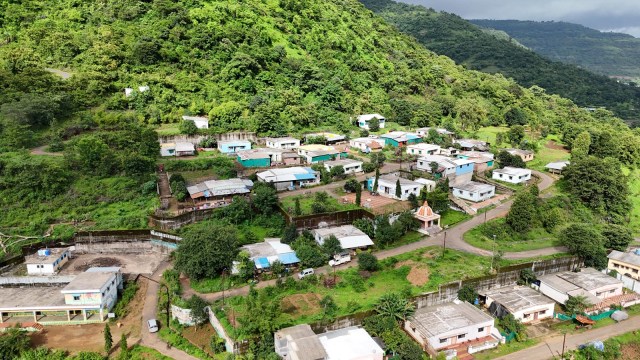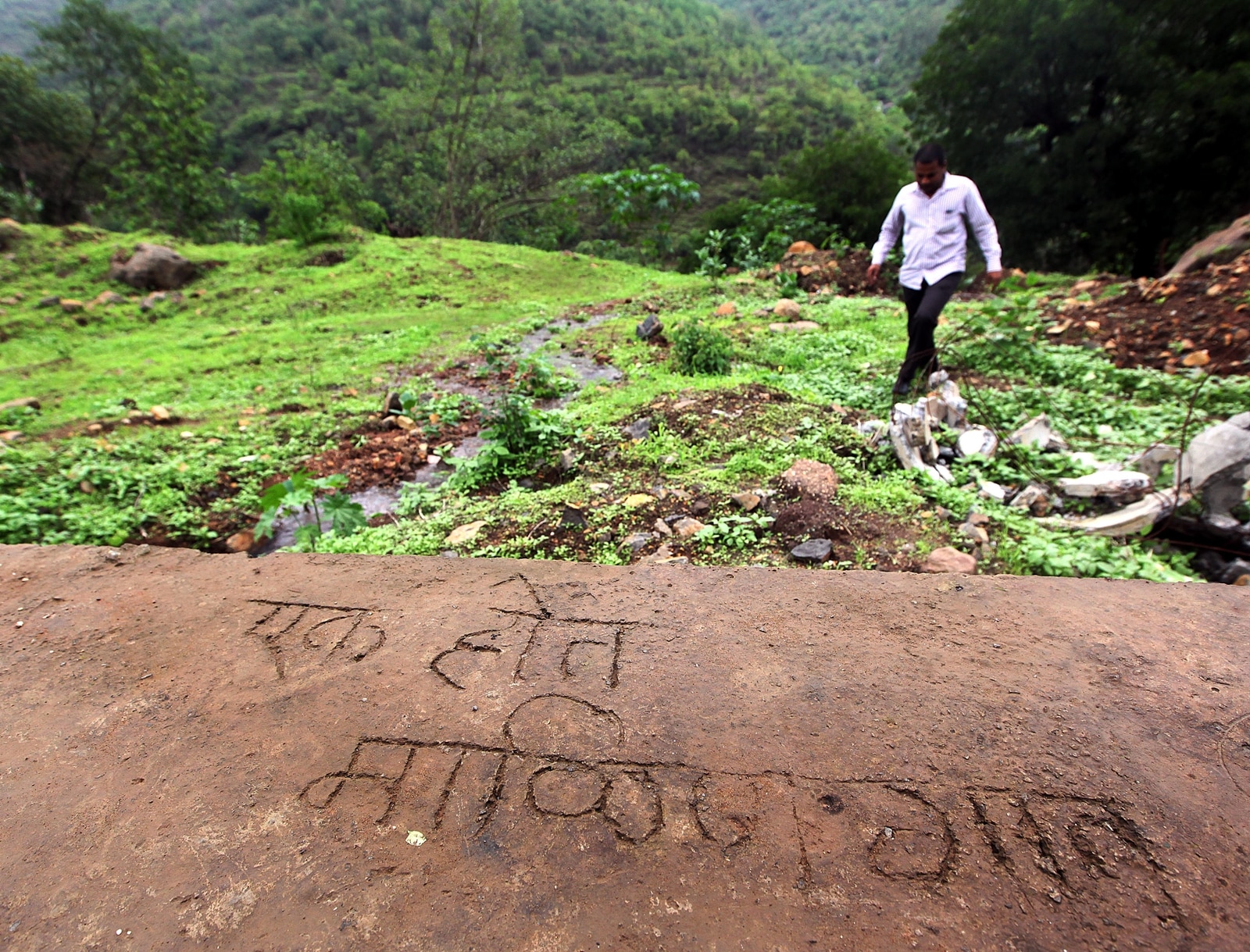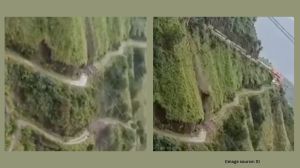Click here to join Express Pune WhatsApp channel and get a curated list of our stories
Ten years after Malin landslide: Why human aspects are important in effective disaster management?
With the intensity of rains increasing every year paired with rampant construction and deforestation, the likelihood of this phenomenon occurring again increases.
 An aerial view of the rehabilitated Malin village about a kilometre from the original village which was destroyed by the landlide in 2014. The village has 68 homes and has facilities such as a village school, common cow shed, gram panchayat offices, temple and is guarded with compound walls. (Express Photo By Pavan Khengre)
An aerial view of the rehabilitated Malin village about a kilometre from the original village which was destroyed by the landlide in 2014. The village has 68 homes and has facilities such as a village school, common cow shed, gram panchayat offices, temple and is guarded with compound walls. (Express Photo By Pavan Khengre)Ten years ago on a rainy monsoon night in July, stones began to tumble down the slopes of the Western ghats with the gushing stream and buried the small village of Malin, eliminating 151 lives and uprooting numerous other livelihoods. This was followed by Taliye and Irshalwadi, both located in the Western Ghats bordering Maharashtra on the west.
With the intensity of rains increasing every year paired with rampant construction and deforestation, the likelihood of this phenomenon occurring again increases.
Here we try to understand what landslides are, why the Western Ghats are highly susceptible to it and measures taken or that should be taken to minimise damages due to landslides.
What are landslides?
The Geographic Information System (GIS), India, defines landslides as a “a physical phenomenon when a part of rock, and/or debris/ soil fall due to the action of gravity”. It is believed to be caused by different factors (e.g., slope, lithology, rock structure, land use/ cover, geomorphology etc.) and in general is triggered by heavy rainfall or earthquake tremors.
 An embankment wall at Malin with the message: “Once there was a village called Malin”. (Express archives)
An embankment wall at Malin with the message: “Once there was a village called Malin”. (Express archives)
Landslide prone regions in Maharashtra
In India, about 0.42 million sq. km or 12.6 per cent of land area, excluding snow covered area, is prone to landslides, according to GIS mapping. Out of this, 0.09 million sq. km is in the Western Ghats and Konkan hills (Tamil Nadu, Kerala, Karnataka, Goa and Maharashtra). The Western Ghats is the mountainous region covering at least 70 talukas from 12 districts of Maharashtra including Palghar, Thane, Raigad, Mumbai, Ratnagiri, Sindhudurg, Kolhapur, Sangli, Satara, Pune, Ahmednagar and Nashik.
According to the Landslide Atlas published by National Remote Sensing Centre, Indian Space Research Organisation (ISRO) in 2023, Pune district ranked 107 in the list of 147 districts ranked according to their exposure to landslides. Maharashtra witnessed 5,112 incidents of landslides from 2014-2023 according to the same report which covers landslide vulnerable regions in 17 states and two union territories of India in the Himalayas and Western Ghats.
Sahyadris and landslides
Himalayas and Western Ghats are highly susceptible to mass movements due to hilly topography and heavy rainfall, as cited in the ISRO report. Sahyadris form a part of the Western ghats in Maharashtra.
“Sahyadris were formed ages ago after volcanic lava erupted, was deposited and horizontally spread out over the region, which is called basaltic flows today,” said former head of the geology department at Savitribai Phule Pune University, Dr Satish Thigale.
“Tectonic movements in the region widen the gaps in these flows, making the slopes unstable,” he added.
“Paddy cultivation on the mountain slope was considered as one of the reasons for the landslide at Malin. Water saturation in the soil is required for paddy cultivation which increases weight and imbalances the centre of gravity,” said retired Colonel VS Supanekar, former director, Centre for Disaster Management Yashada (Yashwantrao Chavan Academy of Development Administration).
Thigale further sheds light on the importance of water tables in hilly regions and how monitoring these can help predict sliding, “Rain water, when percolates down through the previous layer of soil displaces air and thus increases weight of the slope. It starts moving down slope and eventually exits in the form of spring, at an intersection with the land surface. Location of springs is thus important because it ultimately constitutes the toe of the landslide(end of the moving material of the landslide).”
Supanekar believes that due to less percolation of water due to deforestation, drainage management has to be deliberate today to prevent rapid sliding.
Prediction, Prevention and preservation
Supanekar explained that the government was actively working with techniques like chain link fencing, sand blasting, rock bolting, etc., which can prevent or arrest a landslide. However preservation of mountains as well as community awareness is equally important to minimise damage.
“Interviews of surviving residents of Malin, which saw a deadly landslide in July 2014, revealed they experienced tremors and aftershocks of the 1967 Koyna and 1993 Latur earthquakes. Villagers at Malin experienced land slides, the walls of their houses cracked and groundwater oozed into houses on the slopes during the rainy season. They experienced this not just for one or two years, but since 2003. Thus, awareness is important not only among inhabitants but also among local authorities,” said Thigale.
He advocates for MCDM (multi criteria decision making) approach in disaster management which aims to not only involve geomorphological, geological, climatological, seismological and RS-GIS aspects but also social, economical, political and most importantly psychological considerations for solving this mass-wasting problems.
Click here to join Express Pune WhatsApp channel and get a curated list of our stories












